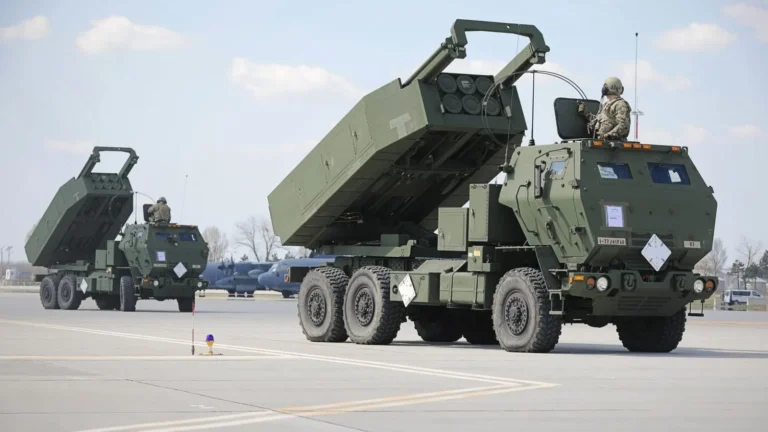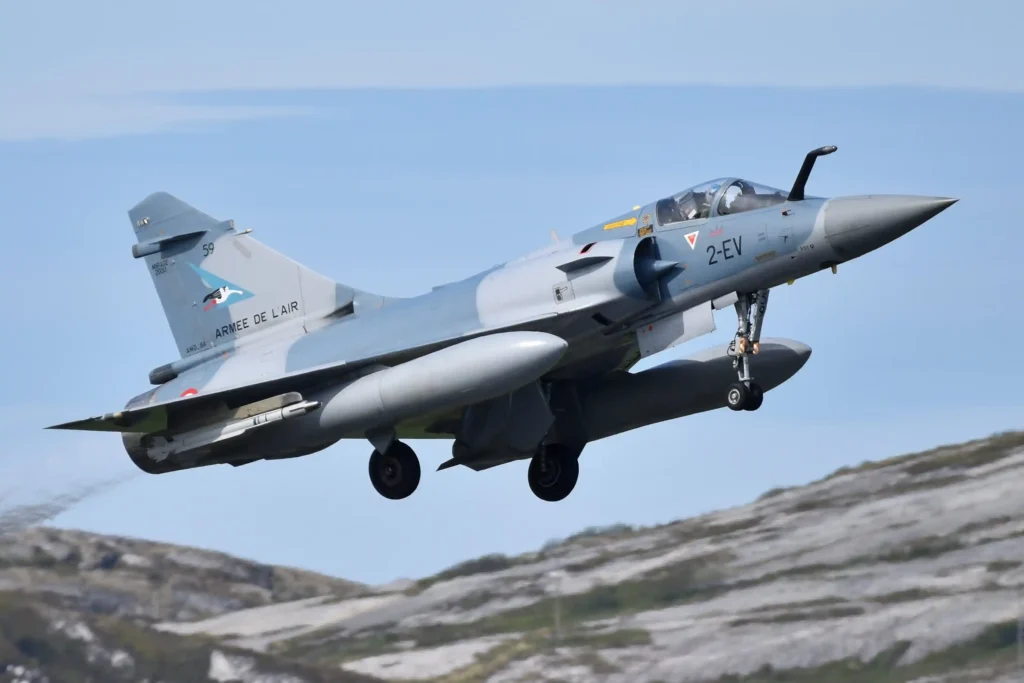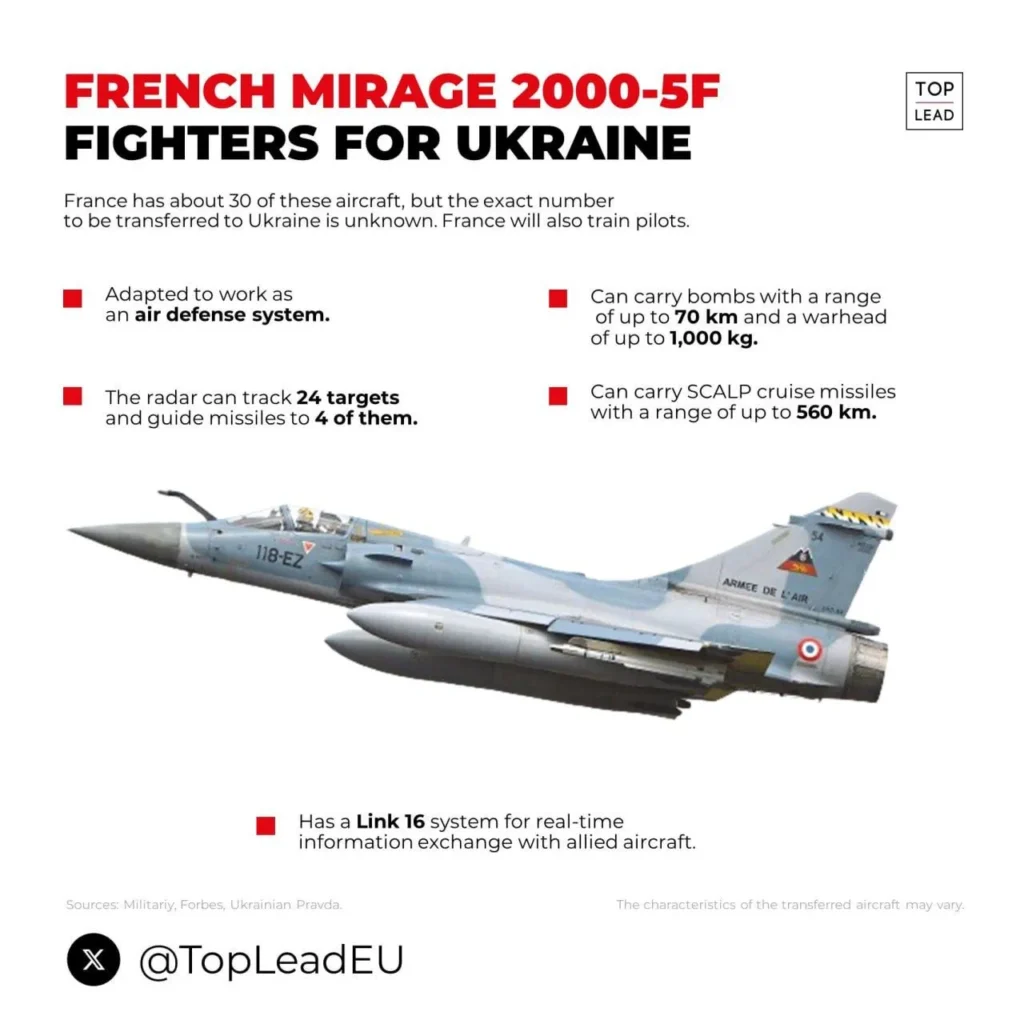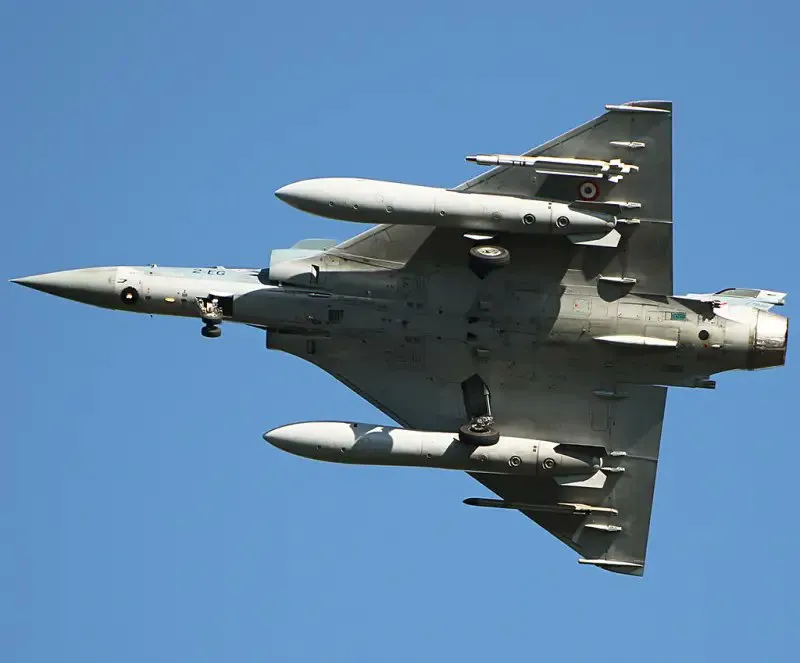Follow Us:

Share
The Dassault Mirage 2000 is one of the most recognizable and respected fighter jets in modern air forces worldwide. Developed by Dassault Aviation in France, this multirole aircraft has seen extensive service in various roles, from air superiority to strike missions. Its sleek design, combined with advanced avionics and powerful performance, has made the Mirage 2000 a staple in many countries’ air forces.
In this post, we’ll dive into the details of this remarkable aircraft, focusing on its different variants, capabilities, and legacy in the world of aviation.
The Dassault Mirage 2000 was introduced in the late 1970s as a successor to the Mirage III, another iconic fighter in the French Air Force’s arsenal. Designed and built by Dassault Aviation, a company renowned for its work in the aviation industry, the Mirage 2000 was developed to meet the growing demand for a lightweight, highly versatile jet that could perform multiple roles.
Unlike its predecessors, the Dassault Mirage 2000’s design incorporated cutting-edge avionics and a powerful radar system, making it not only a formidable air superiority fighter but also an excellent ground attack aircraft.

The Dassault Mirage 2000 is powered by a single SNECMA M53 engine, giving it remarkable speed and maneuverability. With its delta-wing design, the aircraft boasts exceptional agility, allowing it to perform high-speed turns and swift aerial maneuvers that make it a challenging target for adversaries.
One of the key features of the Dassault Mirage 2000 is its ability to operate in diverse environments, ranging from high-altitude combat to low-level strikes. This versatility is a significant reason why the Mirage 2000 has remained in service for decades, with upgrades ensuring it remains relevant in modern warfare.
As of today, the Mirage 2000 aircraft remains in service with several air forces worldwide, including those of India, Qatar, and the United Arab Emirates, among others. Its various configurations, such as the Dassault Mirage 2000D and Mirage 2000-5, have kept it competitive with newer generations of fighter jets, ensuring that it continues to play a vital role in modern aerial combat.
The Dassault Mirage 2000 family includes a range of variants, each tailored to different roles and operational requirements. From its early days as an air superiority fighter, the Mirage 2000 has evolved into a versatile multirole aircraft, capable of fulfilling a wide variety of missions.
Whether engaging in dogfights, striking ground targets, or performing reconnaissance, the Mirage 2000’s adaptability has made it an enduring asset to air forces across the globe.
The Mirage 2000C was the first variant of the Mirage 2000 to enter service, designed primarily for air superiority. Its purpose was to defend French airspace from enemy aircraft, and it was equipped with a powerful RDI radar that gave it a significant edge over adversaries.

The aircraft’s delta-wing configuration enhanced its agility, allowing it to execute high-speed turns and tight maneuvers in combat. Although designed mainly for air-to-air combat, the Mirage 2000C was also capable of performing limited air-to-ground missions, making it a flexible choice for a range of operations.
This variant was equipped with the Mirage 2000 cockpit, which was designed for ease of operation during high-stress combat scenarios. The straightforward layout of the cockpit allowed pilots to focus on their mission without being overwhelmed by complex controls.
This model played a key role in the French Air Force’s defense strategy during the Cold War and continued to serve until newer variants took its place.
The Mirage 2000D was developed as a specialized version of the Mirage 2000, tailored for precision strike missions. Unlike the Mirage 2000C, which focused primarily on air superiority, the Mirage 2000D was optimized for ground attack, reconnaissance, and close air support.
With its ability to carry precision-guided munitions (PGMs), the Mirage 2000D was used extensively in modern conflict zones, including NATO operations and airstrikes in Libya.

One of the key features of the Mirage 2000D was its improved Mirage 2000 cockpit, which included advanced avionics and targeting systems. These enhancements allowed pilots to perform precision strikes with greater accuracy and effectiveness.
The Mirage 2000D’s ability to carry out deep strike missions made it a valuable asset for the French Air Force, particularly during operations that required precision bombing in hostile environments.
The Mirage 2000-5 marked a significant leap forward in terms of capabilities. Introduced in the 1990s, this version of the Mirage 2000 featured the RDY radar, which greatly enhanced the aircraft’s ability to detect and engage targets at longer ranges.

The Mirage 2000-5 cockpit was also upgraded with newer avionics, providing pilots with better situational awareness and control during combat.
Designed as a true multirole fighter, the Mirage 2000-5 was capable of both air-to-air and air-to-ground combat, making it highly versatile. It was equipped with an expanded weapons suite, including air-to-air missiles and precision-guided bombs, allowing it to perform a wide range of missions.
The Mirage 2000-5 fighter jets were deployed in several countries, offering a significant improvement over earlier models in terms of operational effectiveness.
The Mirage 2000-5 Mk2 is an upgraded version of the Mirage 2000-5, with several enhancements to avionics, radar, and weapons systems. It was developed to keep the Mirage 2000 competitive against newer fighter platforms, providing advanced electronic warfare capabilities and better radar systems.
The Mirage 2000-5 Mk2 also offered improved radar cross-section management, allowing it to better evade enemy detection.
This variant continued to showcase the Mirage 2000’s adaptability and efficiency in modern combat. With improved capabilities for both air-to-air and air-to-ground missions, the Mirage 2000-5 Mk2 remains one of the most advanced versions of the aircraft, capable of meeting the demands of contemporary warfare.
The Mirage 2000-5 represents one of the most refined and capable versions of the Dassault Mirage 2000 series. This variant was introduced to address the growing need for advanced multirole fighter capabilities, combining air-to-air and air-to-ground combat functions with cutting-edge avionics.
The Mirage 2000-5 brought numerous enhancements to the platform, making it a highly sought-after asset for modern air forces.

One of the key features of the Mirage 2000-5 is its advanced avionics suite. Equipped with the RDY radar system, this version offers a significant leap in radar capabilities compared to earlier variants. The RDY radar is a multimode pulse Doppler radar, capable of tracking multiple targets at long range while providing superior tracking of both air and ground targets.
This is a crucial feature for any multirole fighter, as it allows the Mirage 2000-5 to engage enemy aircraft while also performing ground attack missions with ease.
The Mirage 2000-5 cockpit has also seen significant upgrades. The cockpit features a Head-Up Display (HUD) that provides pilots with critical flight information without them needing to look down at their instruments.

This enhancement is especially important during high-speed engagements or complex combat situations. The inclusion of Multifunction Displays (MFDs) further improves pilot situational awareness by showing radar data, weapon status, and other vital information on easily accessible screens.
These avionics upgrades ensure that the Mirage 2000-5 can maintain a competitive edge over adversaries, even in the modern age of stealth aircraft and advanced missile defense systems. By improving detection and engagement capabilities, the Mirage 2000-5 fighter jet can operate effectively in contested environments.
The Mirage 2000-5 was designed to carry a wide range of modern munitions, further cementing its role as a multirole fighter. In air-to-air combat, the Mirage 2000-5 can carry the MICA missile, a highly versatile radar-guided missile capable of engaging both air and ground targets.
The MICA missile gives the Mirage 2000-5 the ability to engage threats at both medium and long ranges, enhancing its survivability and combat effectiveness in air superiority roles.

In addition to air-to-air missiles, the Mirage 2000-5 is capable of carrying a range of precision-guided munitions (PGMs) for ground strike missions. This includes laser-guided bombs and GBU series bombs, which enable the aircraft to conduct pinpoint strikes against high-value ground targets with minimal collateral damage.
These capabilities make the Mirage 2000-5 fighter aircraft an effective tool for both offensive and defensive operations, as it can seamlessly transition between different mission types depending on the operational requirements.
With a maximum speed of 2,450 km/h (Mach 2.2), the Mirage 2000-5 is a fast and agile platform, capable of outrunning most surface-to-air missiles and intercepting enemy aircraft at long range. Its combat radius of 1,000 km with external fuel tanks allows it to conduct long-range missions, making it highly effective in operations that require rapid deployment or deep penetration into enemy territory.

One of the standout features of the Mirage 2000-5 is its advanced cockpit, which has been specifically designed to provide pilots with an intuitive and efficient interface during high-pressure combat operations.
The cockpit layout of the Mirage 2000-5 is optimized to minimize pilot workload while maximizing situational awareness, allowing pilots to focus on executing their mission with precision.
The Mirage 2000-5 cockpit is designed with a glass cockpit, meaning that many of the traditional analog instruments have been replaced with digital displays. This design is much more streamlined and provides pilots with real-time data about the aircraft’s performance, weapons systems, and radar information. This layout helps reduce the time a pilot spends scanning instruments and allows them to focus on the mission at hand.

One of the key features of the cockpit is the Head-Up Display (HUD), which projects critical flight data onto the windshield in the pilot’s line of sight. The HUD includes information such as altitude, speed, heading, and radar data, as well as targeting information for weapons systems.
The HUD also provides weapons status indicators, allowing the pilot to quickly assess whether they are ready to engage targets without having to divert their attention to other parts of the cockpit.
The Mirage 2000-5 cockpit also features multiple Multifunction Displays (MFDs) that provide detailed information about radar, targeting, and aircraft systems. These displays are customizable, allowing pilots to tailor the data they receive based on the operational situation. The ability to display real-time radar data, as well as detailed maps and targeting information, gives pilots a comprehensive view of the battlespace.
For example, the MFDs can display a radar picture of the surrounding airspace, highlighting the position of enemy aircraft or ground targets. This allows the pilot to make more informed decisions during combat, ensuring that they can engage threats effectively while avoiding potential dangers.
The cockpit design of the Mirage 2000-5 prioritizes ergonomics to ensure that the pilot can operate the aircraft efficiently and comfortably during long missions. The flight controls are designed to be intuitive, with a hands-on throttle and stick (HOTAS) configuration that allows the pilot to control both the throttle and the stick without removing their hands from the controls.
This design helps minimize pilot workload and allows for more precise control of the aircraft during complex maneuvers. The seating position is also optimized for comfort and visibility, ensuring that pilots can maintain focus and stay alert during extended operations.
The Dassault Mirage 2000 series, particularly the Mirage 2000-5 and Mirage 2000-5 Mk2, remains an attractive option for countries seeking a modern, cost-effective multirole fighter jet. However, the Mirage 2000 price varies significantly depending on the model, upgrades, and the number of units purchased.
In general, the price of the Mirage 2000 is considerably lower than that of more advanced fourth-generation or fifth-generation fighters, such as the F-35 or Rafale, making it a popular choice for countries looking to balance performance with cost.
The cost of a Mirage 2000-5 can range from approximately $30 million to $40 million per unit, depending on the specific configuration and upgrades included. This makes it a relatively affordable option for air forces looking to modernize their fleets without breaking the bank.
The Dassault Mirage 2000 has enjoyed a long and successful service life, and despite being over 40 years old, it continues to be a formidable player in modern air combat. With its proven capabilities, versatile performance, and solid reputation, the Mirage 2000 has left a lasting legacy in the world of military aviation. However, as technology advances and new fighter jets are developed, what does the future hold for the Mirage 2000?
The Dassault Mirage 2000 fighter jet has earned its place in history as one of the most iconic and successful French aircraft. Its legacy is defined by its ability to serve in a wide range of roles—from air superiority and multirole missions to precision ground strikes. The Mirage 2000 was designed to counter emerging threats during the Cold War, and it has successfully adapted to meet the challenges of modern combat.
Throughout its service history, the Mirage 2000 has demonstrated exceptional performance in numerous theaters of operation. The aircraft has seen action in conflicts such as the Gulf War, Kargil War, Libya, and Yemen, where it was used to provide air support, carry out precision strikes, and ensure air superiority in contested airspaces. Its success in these missions has solidified the Mirage 2000’s reputation as a reliable, capable, and effective fighter aircraft.
Furthermore, the Dassault Mirage 2000 has been a critical asset for many nations, including those in the Middle East, Asia, and Europe. Countries such as India, Qatar, and Greece have relied on the Mirage 2000 to safeguard their airspace and fulfill offensive missions. Its versatility has made it an attractive choice for air forces seeking a multirole platform that can deliver high performance at an affordable price.
The Dassault Mirage 2000 is often seen as a bridge between earlier-generation jets, like the Mirage III, and more modern designs like the Dassault Rafale and fifth-generation fighters. While the aircraft is no longer at the cutting edge of aviation technology, its performance and capabilities remain highly relevant, particularly for nations seeking an effective, yet cost-efficient fighter.
Looking ahead, the Dassault Mirage 2000’s future will likely be shaped by the evolving needs of its operators and the competitive landscape of modern air forces. While many nations are transitioning to fifth-generation fighter jets like the F-35 or the Dassault Rafale, the Mirage 2000 still offers unique advantages in terms of cost-effectiveness, versatility, and reliability.
For countries with smaller defense budgets, the Dassault Mirage 2000 presents an affordable alternative to more expensive jets. As long as the Mirage 2000 continues to be supported by upgrade programs and maintenance contracts, it could remain in service well into the 2030s and beyond. Its multirole capabilities make it particularly useful for nations that require a flexible fighter that can handle a wide range of missions, from air superiority to ground attack.
Moreover, as emerging technologies such as unmanned aerial systems (UAS), artificial intelligence (AI), and advanced radar systems continue to evolve, it is possible that the Dassault Mirage 2000 could see additional upgrades that allow it to compete with modern, more sophisticated platforms. Countries that operate the Mirage 2000 may integrate new technologies into their fleets to extend the aircraft’s operational life.
The Dassault Mirage 2000 is much more than just a fighter jet; it is a symbol of versatility, performance, and endurance in the world of military aviation. From its early days as an air superiority fighter to its current role as a multirole combat aircraft, the Mirage 2000 has proven itself in a wide variety of missions across the globe. Its upgrades, including the Mirage 2000-5 and Mirage 2000-5 Mk2, ensure that the aircraft remains capable of tackling modern aerial threats with cutting-edge technology.
Whether it is defending airspace, conducting precision ground strikes, or performing air-to-air combat, the Dassault Mirage 2000 continues to be a reliable and effective platform for air forces worldwide. Its legacy is firmly cemented in the history of aviation, and its future remains bright, with potential upgrades and new technologies keeping it relevant for years to come.
From the Mirage 2000C to the latest Mirage 2000-5, this remarkable aircraft has shown that it is more than just a tool for air combat—it is an enduring symbol of Dassault Aviation’s commitment to excellence in the skies.
Share
Defense Feeds is publication focusing on informing, engaging, and empowering the world by providing accurate information from defense technology.
Powered by Defense Feeds © 2025 – All rights reserved.